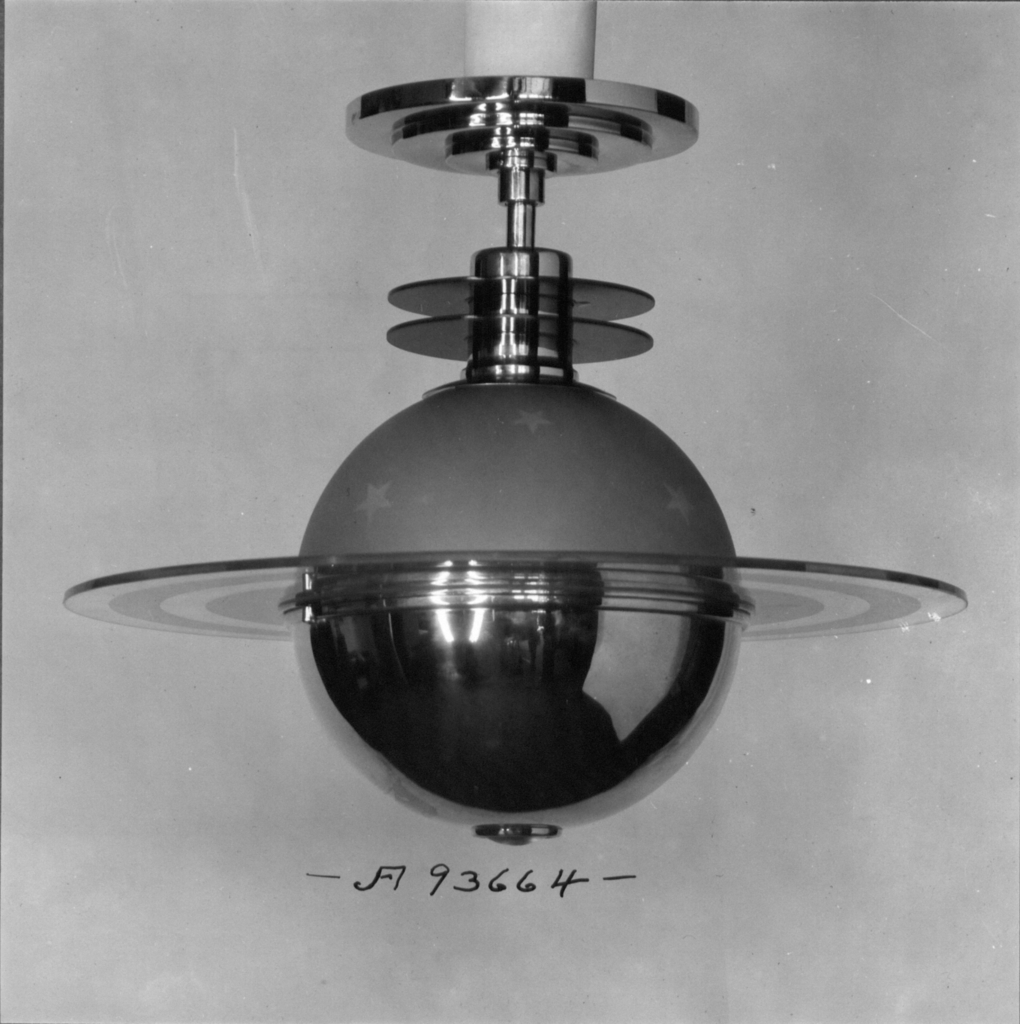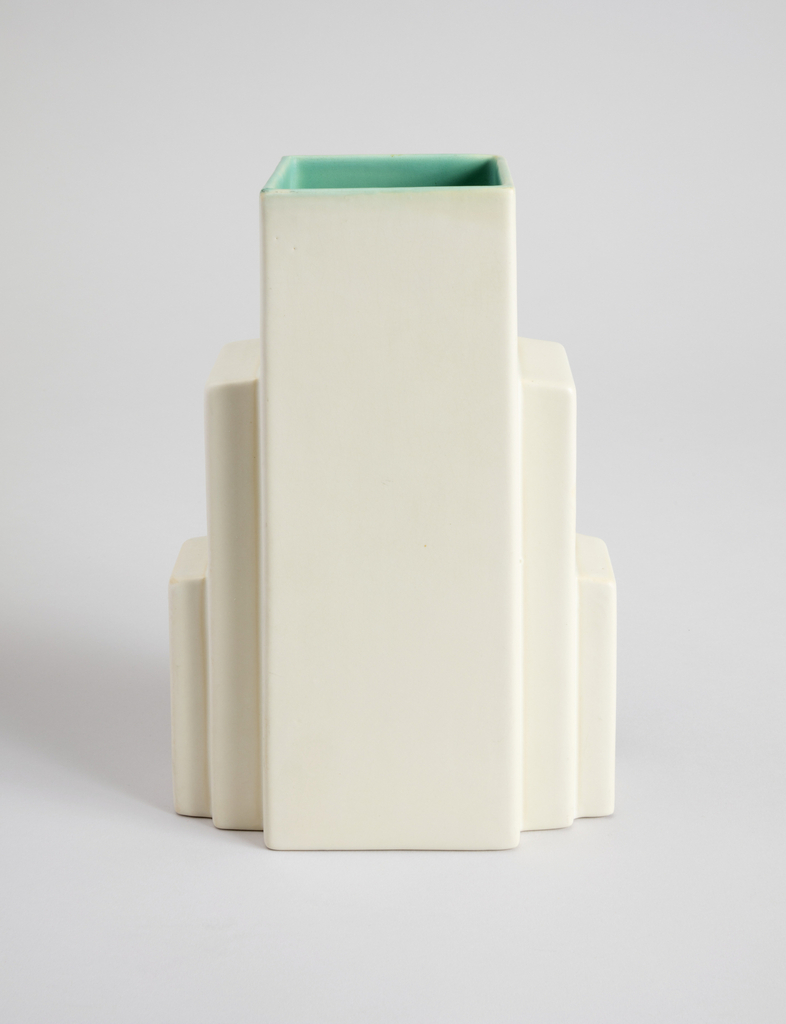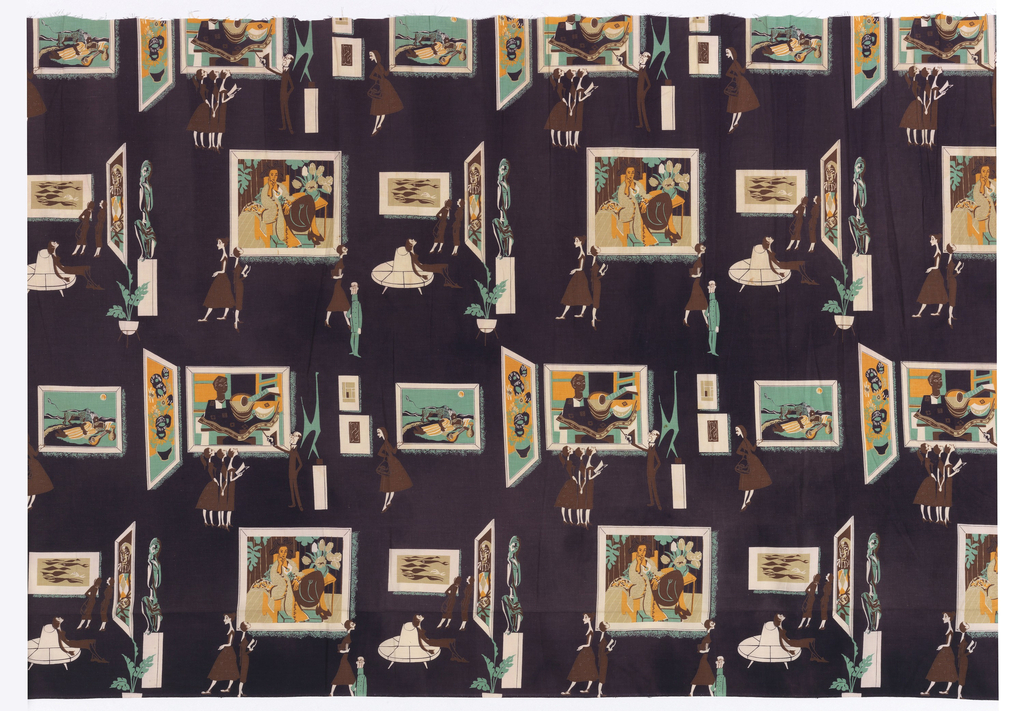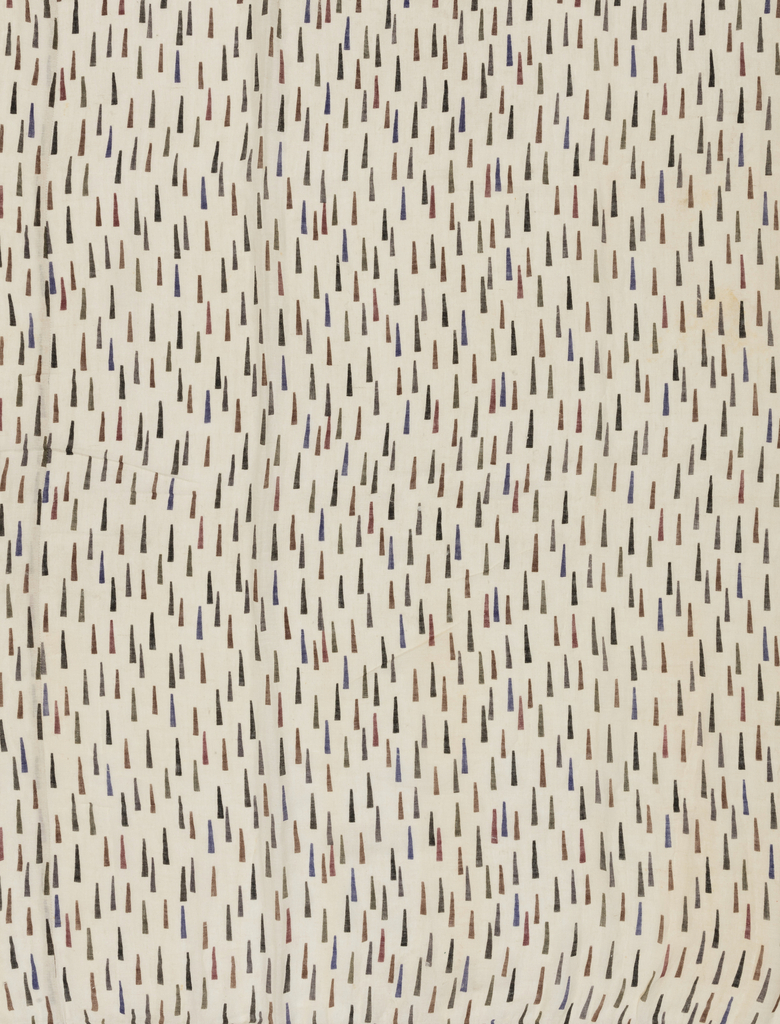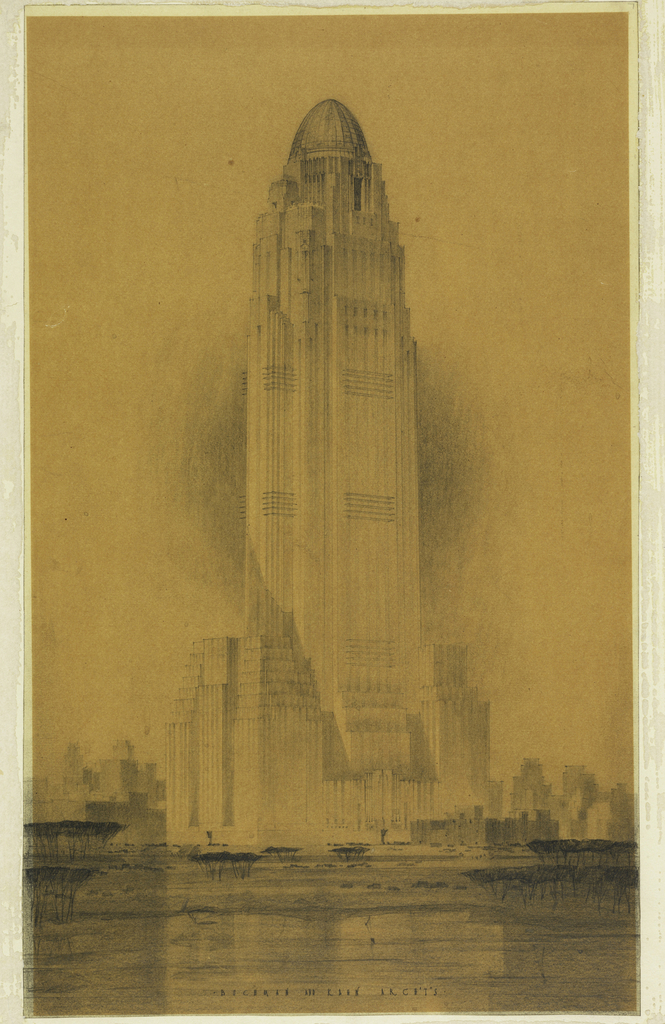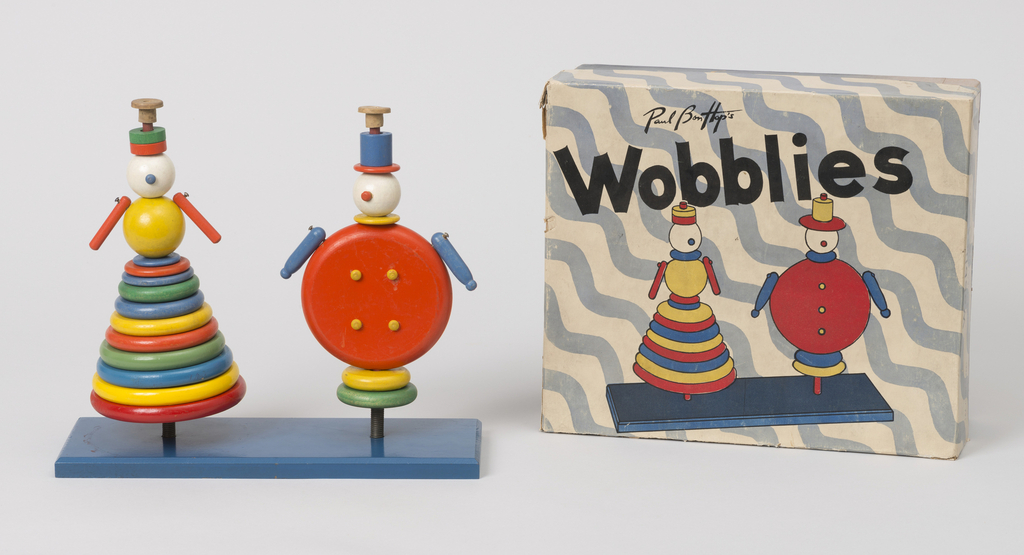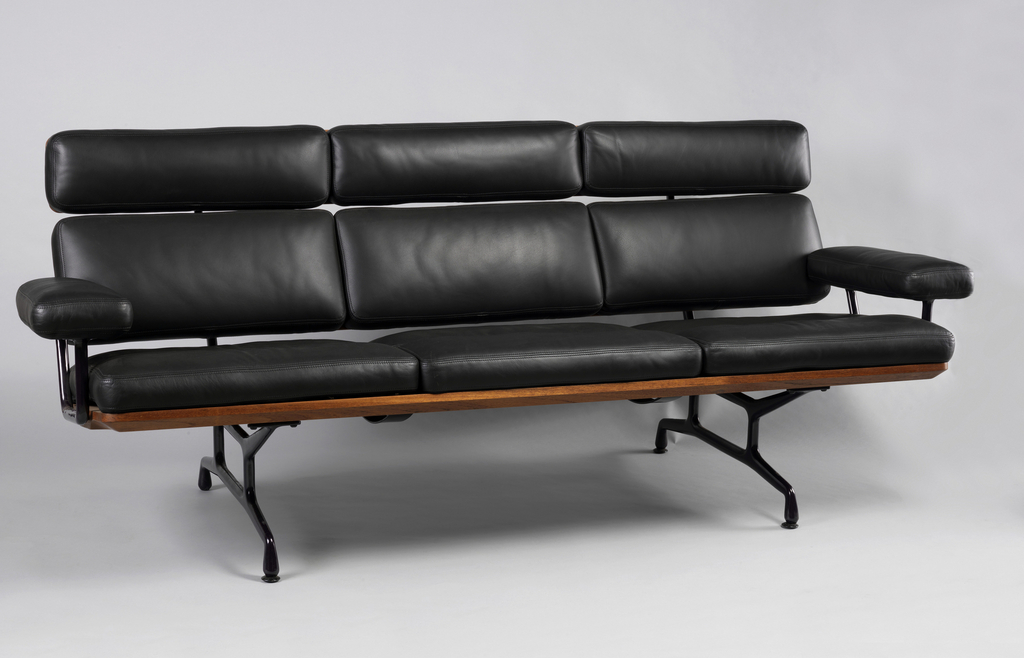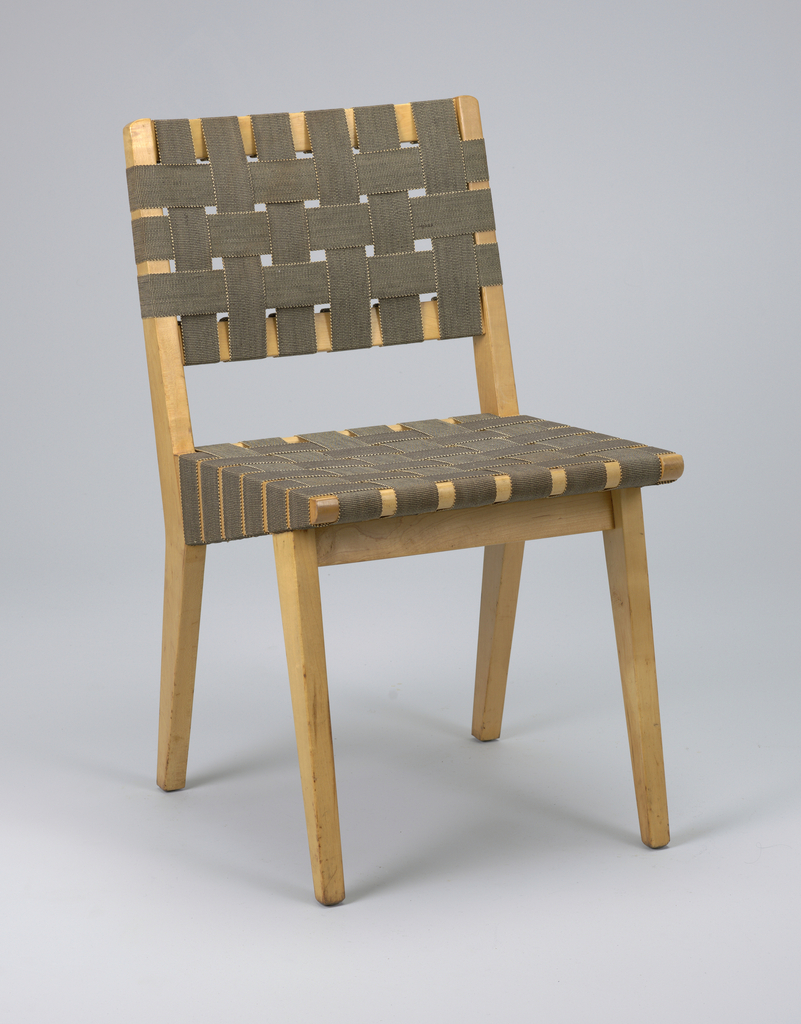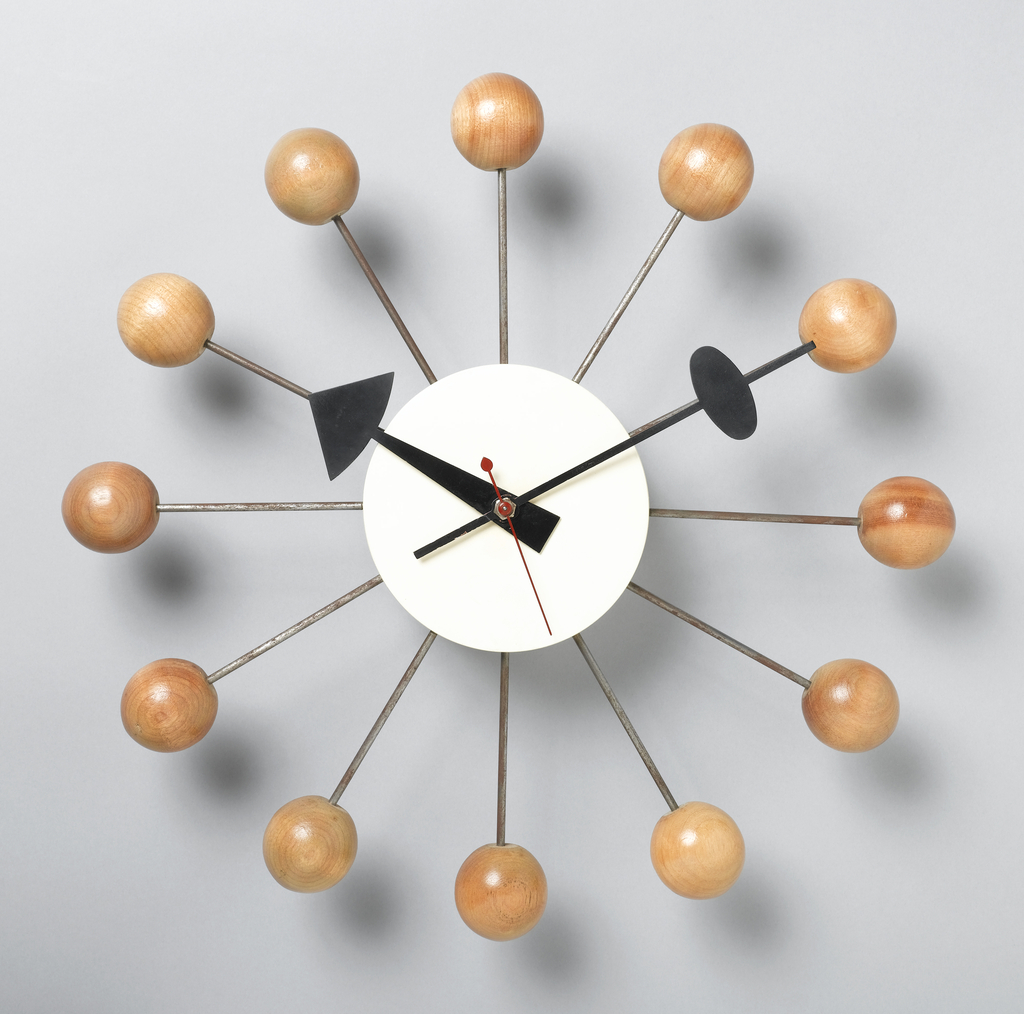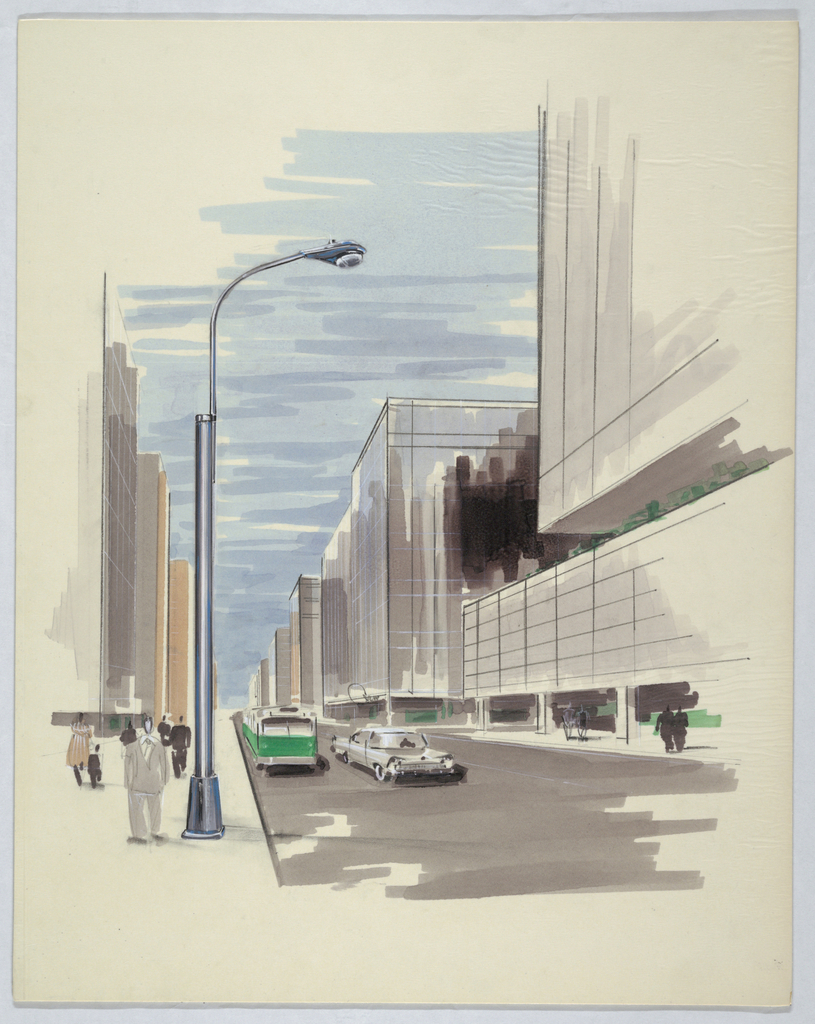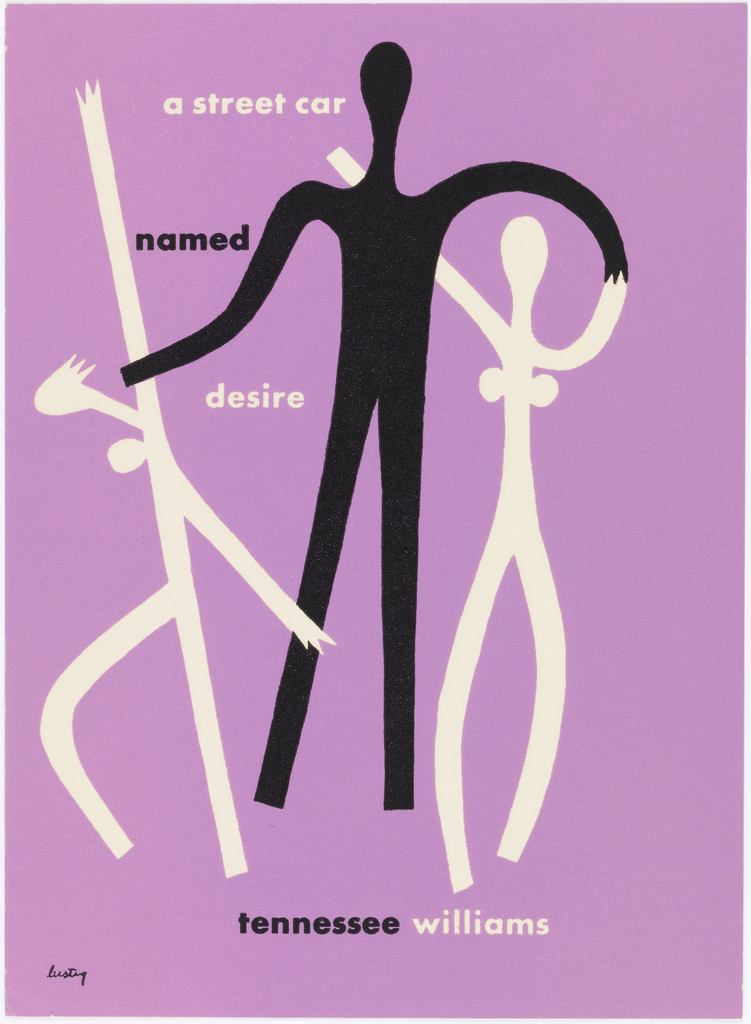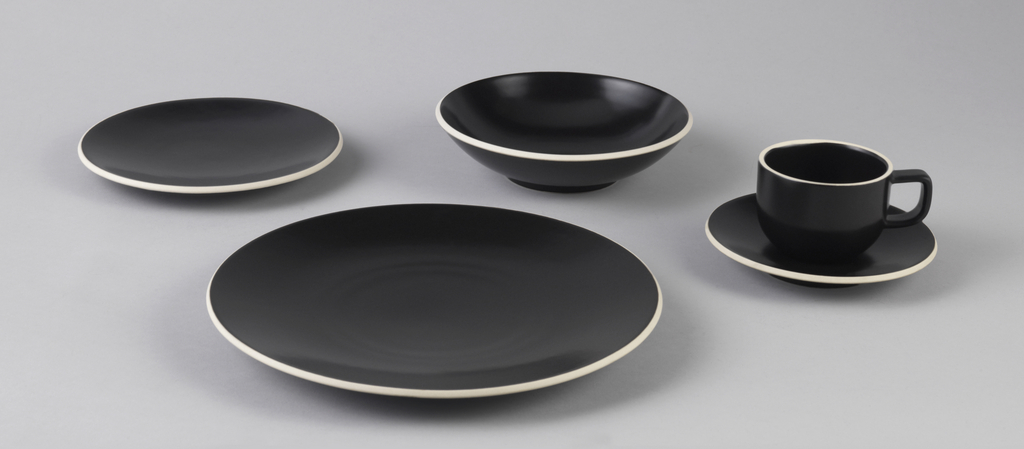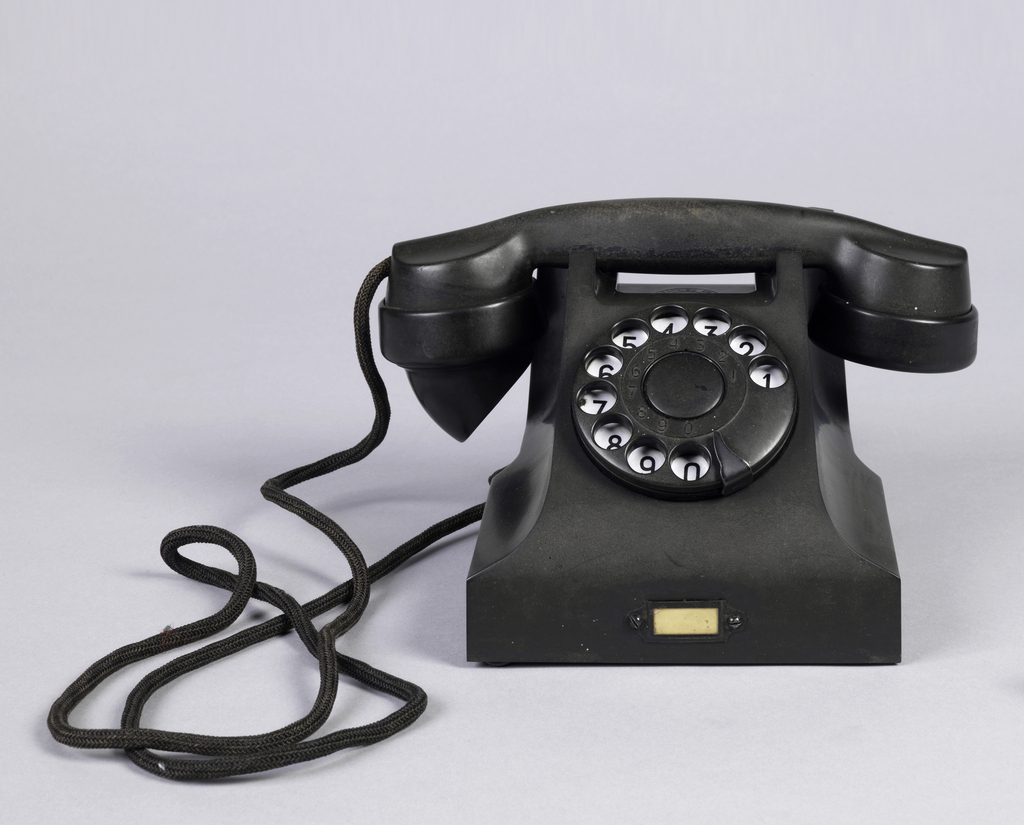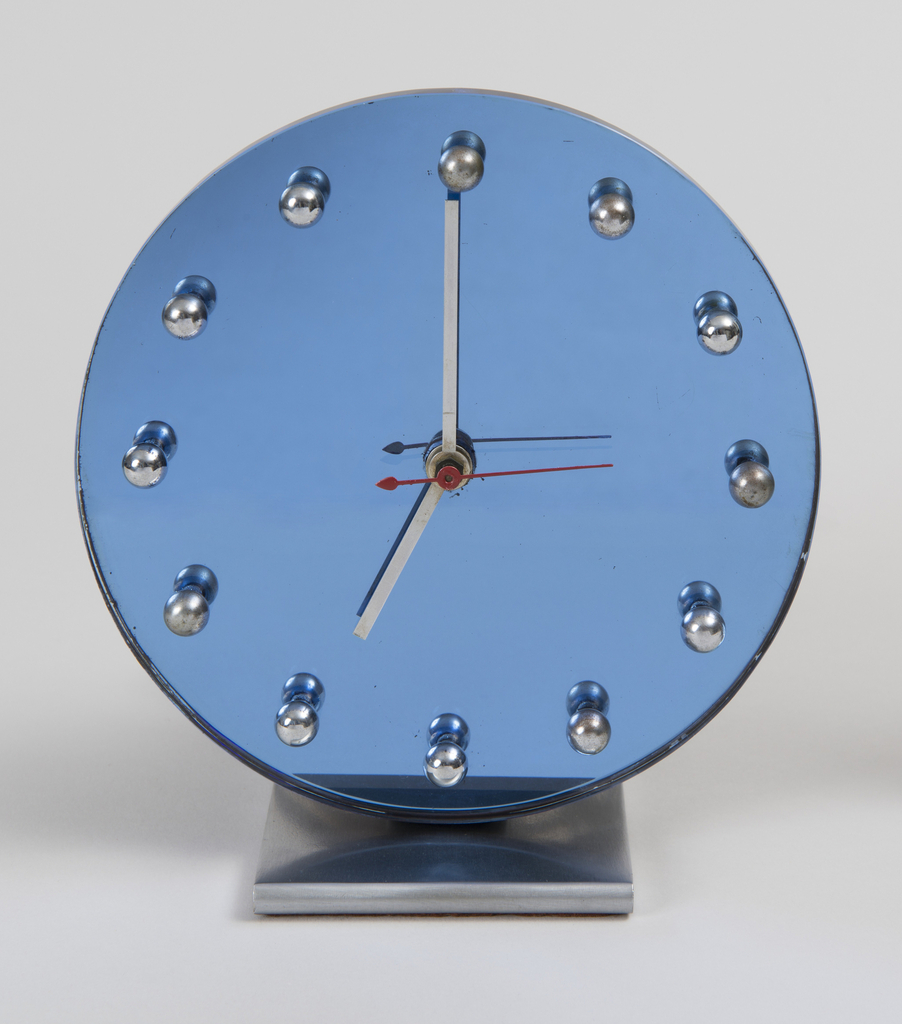Jennifer Cohlman Bracchi discusses this Caldwell lighting fixture, created for Rockefeller Center in 1932.
Even though the stamped marking on the underside of this vase reads “Coors Golden Colorado Pottery,” its coloring is not that of a pale ale. Rather, the exterior is painted with a cream-toned glaze, while its interior is coated in a light teal. This choice of matte glazing further calls attention to the stepped form...
Little is known about this dress-weight cotton fabric, which arrived at the museum in a padded envelope with no return address. It was probably an inexpensive “novelty print” intended for the home-sewing market. This piece had been previously made up as a dirndl skirt, which requires very little shaping, so there is an uncut rectangular...
Alexander Girard was one of the most influential textile designers of the mid-century period. Along with colleagues Charles and Ray Eames, George Nelson, and Eero Saarinen, he was a strong proponent of bringing an affordable modernism to the middle class. From 1952 to 1973, Girard served as head of the Textile Division of Herman Miller...
Ely Jacques Kahn's design for a skyscraper, now on view in The Jazz Age: American Style in the 1920s, demonstrates the power of the architectural drawing as an advertising tool.
The Wobblies show their wobbliness, which is cleverly illustrated on their box by faint wavy blue lines. Interestingly, there are two definitions of the word wobbly. The first is “inclined to wobble; shaky.” A Wobbly (capitalized) is also “a member of the Industrial Workers of the World, an international, revolutionary industrial union founded in Chicago...
During the 1950s and 1960s, television was a cultural force both in America and abroad. Milestones that included the Civil Rights movement, the Vietnam War, and the coronation of Queen Elizabeth II were broadcast across the world. Variety and music shows, which included “Ready Steady Go!” and “The Ed Sullivan Show,” drew youth to watch their...
Ray Kaiser and Charles Eames met in 1940 after Ray entered the Cranbrook Academy of Art in Bloomfield Hills, Michigan. Charles Eames was there studying with fellow modernist designer Eero Saarinen and would soon become head of the industrial design department. Eames and Saarinen were working on a design for a molded plywood chair to...
The Model 666WSP Chair, from 1943, is an example of the furniture designed by Danish-American designer Jens Risom, who died at 100 on December 9, 2016. Risom was the son of a prominent Danish architect and he, himself, is often regarded as one of the founders of midcentury modern design in America. He came to...
Recognizable for its resemblance to an atomic model with wooden spheres attached to the metal rods jutting out from its face, the Ball Clock (model 4755) is, unsurprisingly, sometimes called the “Atomic” clock. Designed by George Nelson Associates for the Howard Miller Clock Company in 1949, the Ball Clock was made by the company through...
Despite the presence of over 300,000 streetlamps in at least 30 distinct designs, few of the millions who visit Manhattan’s bustling streets every year take note of these integral pieces of city life. The lights have not, however, completely escaped notice: this design drawing by Donald Deskey, one of the most influential Industrial Designers of his era, represents one of many...
Alvin Lustig designed numerous book covers for New Directions Publishing over the course of his prolific career, including several for Tennessee Williams’s plays. Lustig’s modernist designs, characterized by their dramatic simplicity, contrast with the voluptuous poetry and unapologetic melodrama of Williams’s writing. For this cover for A Streetcar Named Desire, Lustig choreographed a three-way dance...
2003 National Design Award winner Lella Vignelli passed away December 21, 2016. In honor of her memory, we are sharing an Object of the Day blog post from earlier this year dedicated to her design philosophy. Lella Vignelli has spent a lifetime as a designer examining the ongoing expressions of pure, modern form. Working in...
Informally known as the Bakelite telephone, the sculptural Ericsson DBH 1001 was a groundbreaking design that set the standard for the shape of the modern plastic telephone. The telephone was a collaborative project between the Electrisk Bureau of Oslo, Norway and the Swedish firm LM Ericsson and Televerket. In 1930 Ericsson hired engineer Christian Bjerknes...
The Model 4083A clock made its debut at the 1933 A Century of Progress Chicago World’s Fair. Designed by Gilbert Rohde and manufactured by the Herman Miller Clock Company, a division of the Herman Miller Furniture Company, this sleek circular clock was one of seven modernist clocks designed by Rohde that were on display in...
